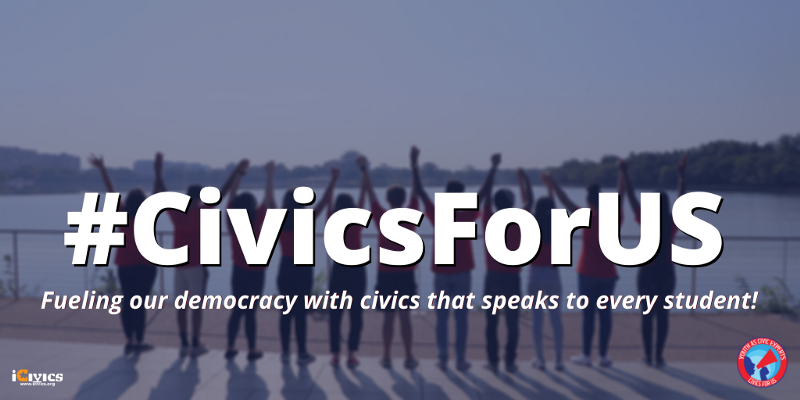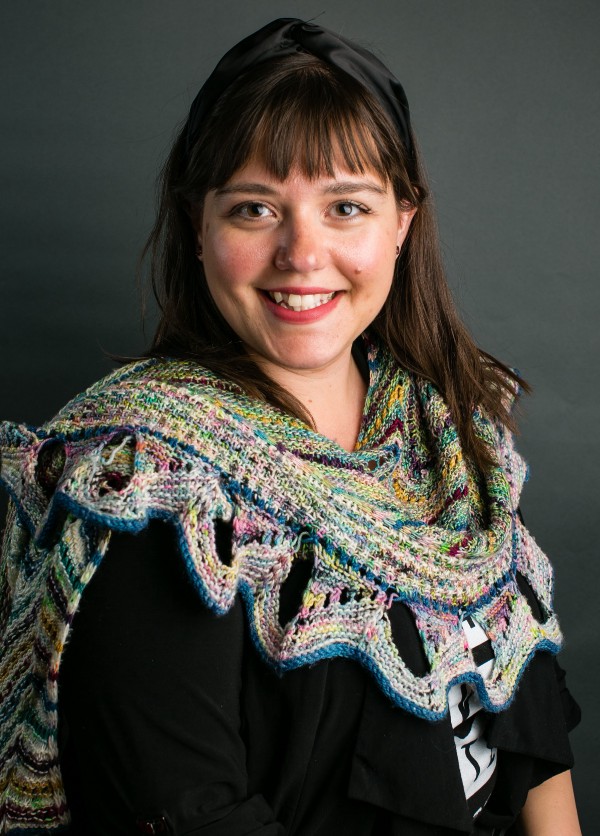
It is imperative that we maintain hope even when the harshness of reality may suggest the opposite. — Paulo Freire
Imagine a community in which everyone had an equal say in matters directly affecting them. That’s what democracy is purported to be, isn’t it? This is what we strive and fight for as civics educators and active citizens in the United States of America. As we teach students the basics of democratic ideals, what a truly functional democracy looks like, and how to be civically minded and participate in our democracy even before they reach voting age, are we practicing what we preach? What if we asked students to make decisions — important decisions — in the classroom, for the school at large, and in the broader community?
If this sounds like anarchy to you, you may be practicing authoritative democracy in your classroom. We’ve been taught that authoritative democracy, wherein the teacher is the ultimate authority and permits the students to engage in making choices within parameters set by administration, teachers, and school boards, is the most democratic way a classroom can function. [1] Where students get the choice of two games to play in PE class or vote on which documentary to watch when there’s a substitute scheduled for the day — they’re getting a choice, right? Democracy is the “control of an organization or group by a majority of its members.” If 75% of the class chooses kickball, democracy just happened in that classroom. Isn’t that enough?
Trick question. It isn’t enough, but it’s a good start.
When we invite students into the decision making, procedure defining, consequence producing, and community building process within a classroom, it can feel frightening and uncomfortable. Democratic education has been defined as education that “focuses on developing students by using democratic principles and processes in the classroom.”[2] The person deciding the principles and processes used is still the person in authority, however. Is that what we want for our students? To always look to the person with a title at the front of the classroom? What are we modeling for how we ask them to exist in the world beyond our classrooms?
Bell hooks, heavily influenced by Paulo Freire, maintains that “Authoritarian practices, promoted and encouraged by many institutions, undermines democratic education in the classroom. By undermining education as the practice of freedom, authoritarianism in the classroom dehumanizes and thus shuts down the ‘magic’ that is always present when individuals are active learners. It takes the ‘fun out of study’ and makes it repressive and oppressive.”[3] Joy and the expression of hope should be the goal of the democratic educator. It’s hard to hold onto hope and be joyful as we teach during a pandemic, and while Black, Brown, Indigenous, and Melanated People (BBIMP)[4] continue to fight for their right to exist in American white supremacist culture. We can’t control COVID-19, but we can transform our teaching practices into those of a more democratic educator and provide our students with the tools to construct a better, more just society.
Here are a couple of ways to transform yourself into a more democratic educator:
(Disclaimer: I’m a Montessori teacher, so I’m all about the transformations I saw in myself moving from a traditional mindset to a Montessori framework in my teaching career, so my suggestions are mostly based on Montessori philosophy.)
1. Think of yourself as a sheepdog — your role is to guide and observe, not dictate.
As a Montessori educator, observation and the role of the teacher in the classroom have become second nature to me. Maria Montessori, an educational pioneer who developed the Montessori method, wrote
“The work of the teacher is to guide the children to normalization, to concentration. She is like the sheepdog who goes after the sheep when they stray, who conducts all the sheep inside. The teacher has two tasks: to lead the children to concentration and to help them in their development afterwards. The fundamental help in development, especially with little children of three years of age, is not to interfere. Interference stops activity and stops concentration.”[5]
In the classroom, this can take many forms: project-based learning, longer work cycles to encourage “flow,” peer teaching (which is much easier in a multi-age classroom), Socratic Seminars, and choice of varied follow-up work to lessons to show mastery of the material.
2. Invest time in community contracting, conversations, daily meetings/check-ins.
This includes opportunities for students to facilitate classroom meetings instead of a teacher rattling off announcements. The students wholly run community meetings in my classroom, and all students and teachers are required to actively participate on an equal basis. The jobs rotate daily, and each day’s facilitator leads the meeting through its routine of greeting, acknowledgments, announcements, planner check, joke, and reflection. Each student takes responsibility for preparing for their roles, and sometimes we end up changing the routine if it isn’t working for us. For example, it was a struggle for students to come prepared with a current event each day, so we all voted to take it out of the line-up. It was disappointing to me because current events are part of the life-blood of my Humanities class, but I wasn’t going to force it without authentic student involvement. In future years, perhaps it’ll be reintroduced by students who were as engaged with the news as they were past years.
Community meetings aren’t the only reason students come to circle in my classroom. Circling up is also a time to practice mindfulness together, practice restorative justice when someone has been wronged, or process a particularly traumatic event such as the insurrection of January 6th and the recent deaths Ma’Khia Bryant and Andrew Brown, Jr at the hands of the police. Community contracting at the beginning of the year sets the ground for these meetings. Revisit the terms and norms of the contract before each of these types of circle meetings. Facing History and Ourselves has an amazing lesson for community contracting available free for teachers and those who work with youth that I invite you to integrate into your classroom culture.
3. Prioritize place-based education and service learning.
Back to Maria Montessori for a second. In The Absorbent Mind, Montessori writes that “Education is a natural process carried out by the child and is not acquired by listening to words but by experiences in the environment.” Students learn by doing and experiencing — we know chemistry is best mastered when students can practice material learned in an experiment or anatomy learned through a dissection lab. Language and social studies experiences, as disciplines more abstract in nature, can seem few and far between.
What field or service experiences can you offer your students that are civics or history-based? How can you show your students that their lives and what transpires in the world isn’t happening in a vacuum, but is connected to a larger narrative trajectory?
My students have engaged from letter-writing campaigns to their congress people, senators, and state delegates regarding particular pieces of legislation, participated in archaeological digs that uncover historical narratives that have been disappeared during the Jim Crow era, transcribed primary source documents with the Library of Virginia as part of a citizen-historian initiative, and traced places in our region that were important the Reconstruction Era and the excellence of Black Americans to add to a list of historical markers with the Zinn Education Project’s Make Reconstruction Visible Campaign. Look into the communities around you to find ways your students can have a voice in their worlds.
When we tell our students that their voices matter but don’t give them outlets for expressing their views or using their voices, what lesson are we really teaching? Are we saying they’re not ready for it, not mature enough, or not worthy? Even if we’re not explicitly saying so, what message are we sending with our inaction? A simple, low-key way to get your students’ voices involved in a nationwide discussion is through the iCivics’ Youth Network’s #CivicsforUS campaign on social media. They can post direct responses to monthly challenges, make videos on TikTok and Instagram, and more. Students can also take the listening tour through May 12th. More information on both of those campaigns is available on icivics.org/civicsforus.
Democratic educators believe in education as a dialogue with life and want education to happen inside the classroom and within the world. If we are going to imbue our classrooms with freedom, discussion, involvement, and equality, while also moving away from authoritarian democratic practices,[6] educators need to transform their identities and relationships within the classroom as we move toward a more joyful and hopeful practice.
Citations:
[1]Is it authoritative or authoritarian? I would argue, in most cases, it is the latter.
[2]https://democracyeducationjournal.org/cgi/viewcontent.cgi?article=1432&context=home
[3]hooks, bell. Teaching Community: A Pedagogy of Hope. New York: Routledge, 2003. Print.pg. 43
[4]Visit Louiza Doran’s Instagram post https://www.instagram.com/p/CG5SRpBHQz2/?hl=en
[5] Montessori, Maria, ‘The Child, Society and the World: Unpublished Speeches and Writings’, Clio Press Ltd, 16
[6]http://www.ascd.org/research-a-topic/democratic-education-essentials.aspx
 By: Corinna Ferro
By: Corinna Ferro
Corinna Ferro (she/her) is the Adolescent Program Director and Humanities teacher at Williamsburg Montessori School in Williamsburg, Virginia, where she has taught for 11 years. She is also a field consultant and instructor with the Cincinnati Montessori Secondary Teacher Education Program and a member of iCivics EdNet since 2021. Follow her on Twitter @CorinnaFerro or Instagram @corinnaferro and @corinnaknits.
Disclaimer: The views expressed in this blog reflect the views of the author[s] alone and do not reflect the views of iCivics. iCivics does not endorse, verify or represent the accuracy, completeness or reliability of any opinion, statement, recommendation or other information written by a third party and published on the CivXNow blog.


 See All
See All